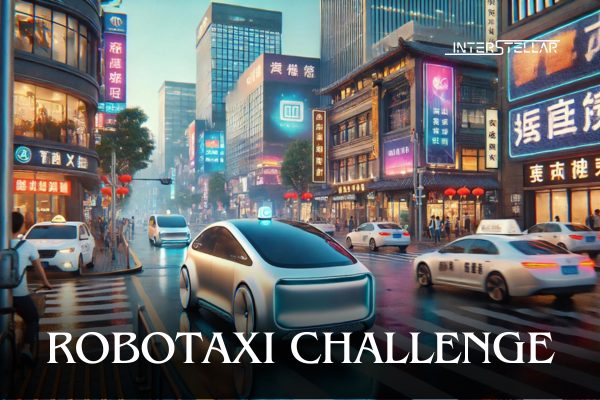China’s Ride-Hailing Drivers Face Uncertain Future as Robotaxis Proliferate
In Wuhan, Liu Yi, a 36-year-old resident, has been working part-time as a ride-hailing driver after construction work slowed down due to a glut of unsold apartments across China. However, Liu now fears another crisis looms as driverless taxis, or robotaxis, gain popularity in his city.
The Rise of Robotaxis in China
China is rapidly advancing in the field of autonomous vehicles, with robotaxis becoming more common on the streets. Liu, along with other ride-hailing drivers, is concerned about the impact of this technology on their livelihoods. “Everyone will go hungry,” Liu said, expressing his anxiety about competing against robotaxis operated by Apollo Go, a subsidiary of the tech giant Baidu.
China’s Ministry of Industry and Information Technology has declined to comment on the issue. However, economists and industry experts note that ride-hailing and taxi drivers are among the first workers globally to face potential job loss due to artificial intelligence. Thousands of robotaxis are already operating in China, and the number is expected to grow.
Autonomous Vehicles Gaining Ground
Self-driving technology is still considered experimental, but China has aggressively pushed forward with trials, in stark contrast to the US, where authorities are more cautious, often launching investigations and suspending approvals after accidents.
At least 19 Chinese cities are currently running tests on robotaxis and autonomous buses. Seven cities have approved trials without the need for human-driver monitors, involving companies like Apollo Go, Pony.ai, WeRide, AutoX, and SAIC Motor.
Apollo Go announced in May that it plans to deploy 1,000 robotaxis in Wuhan by the end of the year. The company had previously forecasted that it would be operating in 100 cities by 2030. In a statement issued on 12 August, Apollo Go reassured the public that the transition to autonomous transport in China would be “gradual and well-regulated.” The company stated that its robotaxi fleet currently complements, rather than replaces, existing transportation options and emphasised that the rollout of autonomous taxis would also create jobs in monitoring, testing, and data analysis.
Pony.ai, backed by Japan’s Toyota Motor, operates 300 robotaxis and plans to expand to 1,000 more by 2026. A vice president of the company mentioned that it could take five years for robotaxis to become sustainably profitable, at which point they are expected to expand “exponentially.”
Other companies, such as WeRide, known for its autonomous taxis, vans, buses, and street sweepers, and AutoX, backed by e-commerce leader Alibaba Group, are also active in cities like Beijing and Shanghai. SAIC Motor has been operating robotaxis since the end of 2021.
Challenges and Concerns
China’s rapid expansion of robotaxis has raised safety concerns, but the government continues to support the technology as part of its economic goals. Last year, President Xi Jinping called for “new productive forces,” leading to regional competition to become leaders in autonomous driving.
However, the introduction of robotaxis has sparked debate on social media, with discussions about job losses dominating searches. In July, hashtags like “Are driverless cars stealing taxi drivers’ livelihoods?” trended online.
Liu Yi and other drivers in Wuhan have their own term for Apollo Go vehicles, calling them “stupid radishes” – a play on the brand’s name in the local dialect. Liu also expressed concern about Tesla’s “Full Self-Driving” system, which, although still requiring human drivers, signals another step towards widespread automation in transportation.
Wuhan driver Wang Guoqiang, 63, worries about the future of low-income workers who depend on ride-hailing jobs. “Ride-hailing is work for the lowest class,” he said, expressing concern about what would happen if the industry were to decline.
Baidu has not commented on the concerns raised by drivers. However, the company has indicated that it aims to become “the world’s first commercially profitable” autonomous-driving platform. Despite current losses, analysts suggest that a lower-cost model could turn robotaxi operations profitable in the future, potentially earning $16,000 per vehicle annually.
Balancing Automation and Employment
While automation, including robotaxis, could benefit China in the long term, given its shrinking population, economists caution that there needs to be a balance between the creation of new jobs and the elimination of old ones. Tang Yao, an associate professor of applied economics at Peking University, stated, “We do not necessarily need to push at the fastest speed, as we are already at the forefront.”
An example of this shift is seen at Eastern Pioneer Driving School in Beijing, where the number of instructors has more than halved since 2019. Instead, the school now relies on technology, including computer instruction tools and virtual reality simulators, to train students.
Zhang Yang, the school’s intelligent-training director, remarked that the new system has led to significant improvements in efficiency, pass rates, and safety awareness.





